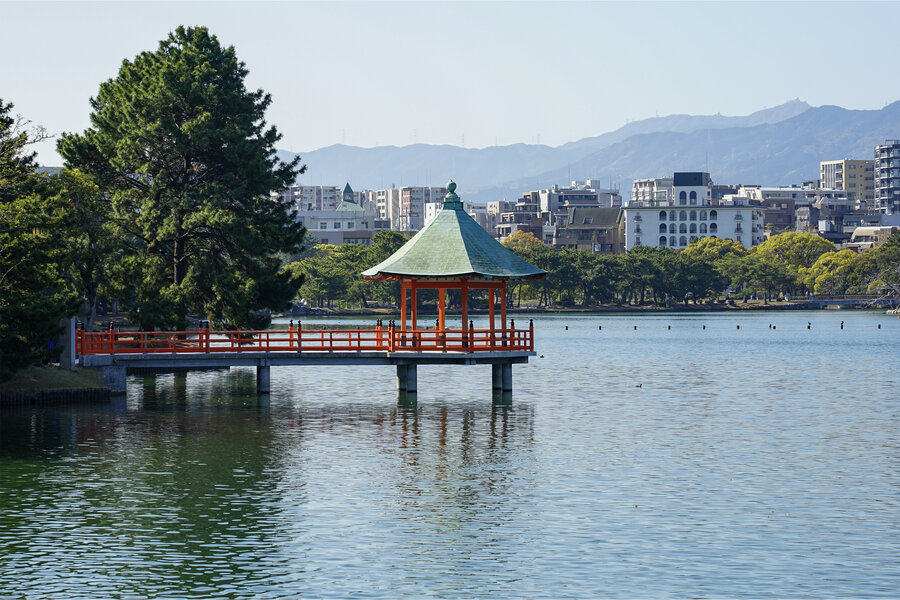Your trip isn’t complete until you…
See: The mystical beauty of Ikinomatsubara Pine Forest. For a nature reprieve from the rapidly growing metropolis, visitors and locals alike flock to Ohori Park, what is known as Fukuoka’s Central Park. But those in the know venture a bit further to Ikinomatsubara, a forest located within Genkai Quasi-National Park. The coastal pine forest has become a popular oceanside driving route and beach swimming destination in recent years but it’s been the subject of songs and poems for centuries. Don’t miss the Genkō Bōrui stone wall that runs through the forest. According to Szasz, the wall was built to defend Fukuoka against the Mongol invasion in 1274 and played a key role in repelling a 140,000-strong army, changing Japan’s history forever.
Touch: Arita porcelain. In a country where pottery is a revered art form, in Fukuoka, arguably no ceramics are more coveted than Arita ware. Named after the nearby pottery town of Arita where it is believed to have originated in the 16th century, the prized Japanese pottery is one of the country’s first forms of porcelain. While Arita ware reached its peak popularity in the latter half of the 17th century when it was in high demand in Europe, it continues to attract ceramic enthusiasts to the town of Arita today. Head to Arita Será, one of the world’s largest Arita shopping malls which boasts 22 ceramic specialty stores. Or, if you can’t afford the 1.5-hour drive to Arita town, check out Arita Porcelain Labin Fukuoka to witness skilled Arita artisans using techniques passed down through generations.
Smell: Plum blossoms in bloom. Cherry blossoms are one of Japan’s main tourism draws in the spring, but locals in Fukuoka are perhaps even more fond of plum (ume) blossoms. Arriving in Fukuoka in January, ahead of the cherry blossom season which begins in late March, they put locals in a good mood as they mark the end of winter and first sign of spring. Reaching their peak through the month of February, the best place to smell the plum blossoms is Maizuru Park, where you can find 250 diverse varieties surrounding Fukuoka Castle.
Hear: Live music. Beyond the ambient sounds of this growing city you’ll find a rich music scene that offers something for everyone. Since 1953, Kyushu Symphony Orchestra has been delighting classical music lovers, playing over 130 concerts a year. The city hosts several music festivals throughout the year—two of the most popular are Music City Tenjin and Nakasu Jazz which both take place in September. But the best listening is low-key, found in jazz cafes like Jazz & Café Backstage, one of Fukuoka’s original jazz bars that showcases Kyushu musicians nightly.
Taste: Yatai food stalls. No visit to Fukuoka is complete without experiencing the intimate, open-air food stalls known as yatais. “These food stalls existed throughout the country after World War II, but are now rarely seen in other parts of the country,” says Manami Ofuchi, a local tour guide who was born-and-raised in Fukuoka. “Unlike many other Japanese cities, Fukuoka’s yatai are still a central part of its food culture, providing fresh, affordable dishes in a lively, communal setting,” adds Metcalfe. Go right when they open at 6 pm since each stall typically has no more than 10 seats and don’t try to share dishes—they prefer guests order at least one dish per person.


AloJapan.com